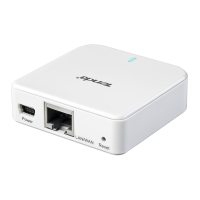WEP uses the stream cipherRC4 for confidentiality,[5] and the
CRC-32 checksum for integrity.
Standard 64-bit WEP uses a 40-bit key (also known as WEP-40),
which is concatenated with a 24-bit initialization vector (IV) to
form the RC4 key. The extended 128-bit WEP protocol uses a
104-bit key size (WEP-104).
A 152-bit WEP is available from some vendors.
Static WEP encryption allows to include 4 WEP Keys while
dynamic WEP encryption changes WEP key dynamically.
WPA/WPA2
The WPA protocol implements the majority of the IEEE 802.11i
standard. It enhances data encryption through the Temporal Key
Integrity Protocol (TKIP) which is a 128-bit per-packet key,
meaning that it dynamically generates a new key for each packet.
WPA also includes a message integrity check feature to prevent
data packets from being hampered with. Only authorized network
users can access the wireless network.
The later WPA2 protocol features compliance with the full IEEE
802.11i standard and uses Advanced Encryption Standard (AES) in
addition to TKIP encryption protocol to guarantee better security
than that provided by WEP or WPA.

